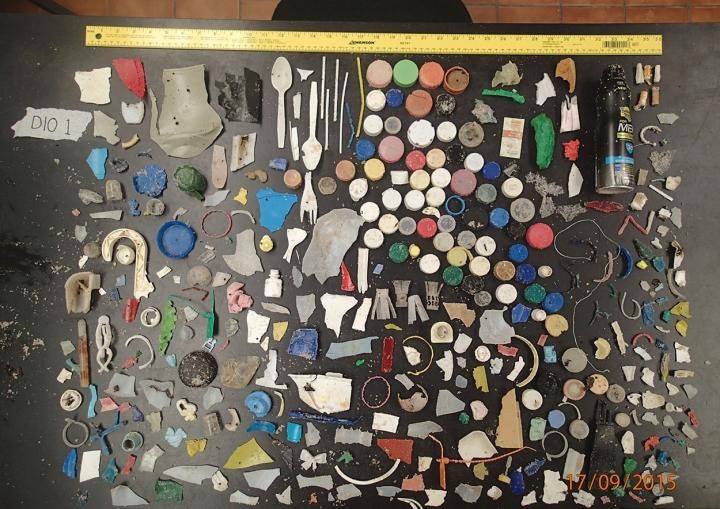Dec 31 2018
Accumulation of trash, specifically plastic, in the ocean and along the shoreline is an environmental, economic, aesthetic, and human health issue that poses serious risks to coastal communities across the globe, including the Gulf of Mexico.
 Marine debris collected during the two-year study. (Image credit: Caitlin Wessel)
Marine debris collected during the two-year study. (Image credit: Caitlin Wessel)
Scientists at the Dauphin Island Sea Lab and the Mission-Aransas National Estuarine Research Reserve collaborated as part of a two-year study to record the issue along the shorelines of the Gulf of Mexico. The findings of the study have been reported in a paper titled “Accumulation and distribution of marine debris on barrier islands across the northern Gulf of Mexico,” published in ScienceDirect’s Marine Pollution Bulletin.
Between February 2015 and August 2017, every month, the scientists kept an eye on marine debris washed ashore at 12 distinct sites on nine barrier islands from North Padre Island, Texas to Santa Rosa, Florida. Sorting of the trash was performed based on type, location, and frequency.
It was very shocking to find out that the amount of trash that gets washed ashore on the coast of Texas throughout the year was 10 times greater than that observed in any of the other Gulf states.
A major portion of the trash (69%–95%) included plastic items, such as bottle caps and bottles, straws, and broken pieces of plastic. The scientists also noted that the amount of trash washed ashore was high during the spring and summer. This could be due to the fact that more people are outside and on the water at this time of the year.